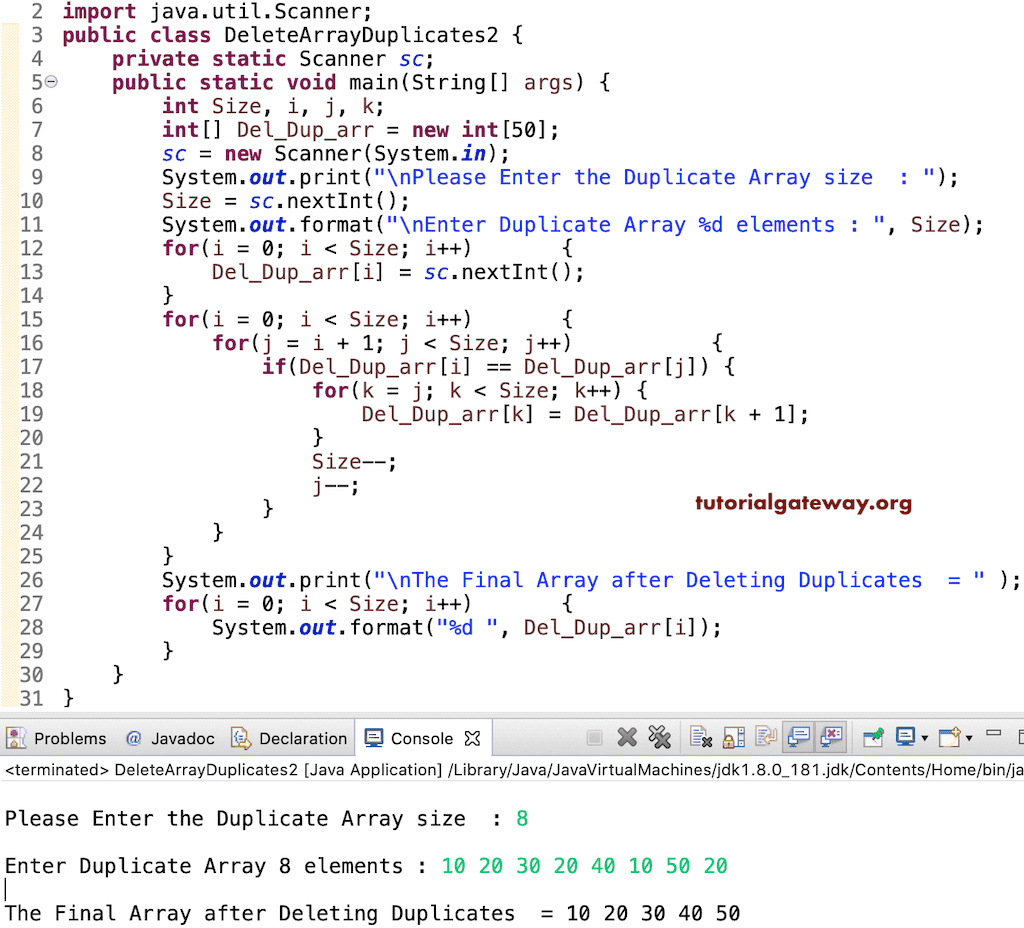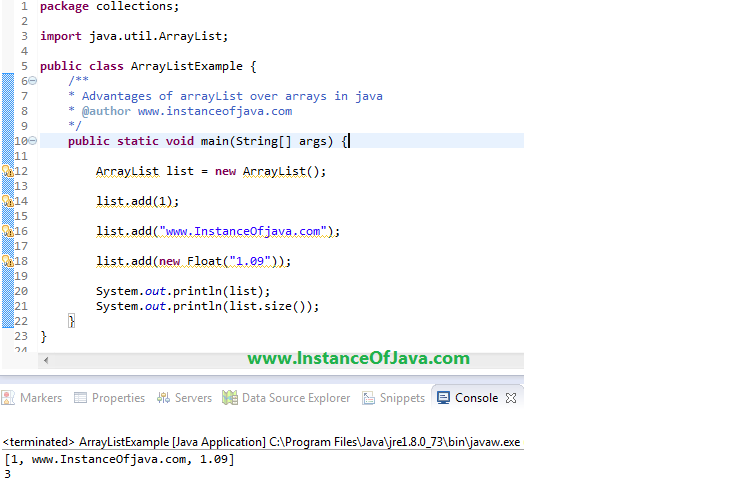

If the list fits in the specified array, it is returned therein. This is the recommended usage for newer Java ( >Java 6) String myArray myArrayList.toArray(new String0) In older Java versions using pre-sized array was recommended, as the reflection call which is necessary to create an array of proper size was quite slow.
#Java array to list code#
It can be coded for in a single line of code as shown below.
While elements can be added and removed from an ArrayList whenever you want. This is one of the most common ways of converting an array T to a List415: Add all elements in the supplied collection. The addAll() method includes each element in the specified collection. The difference between a built-in array and an ArrayList in Java, is that the size of an array cannot be modified (if you want to add or remove elements to/from an array, you have to create a new one). Source for / 400: Add each element in the supplied Collection to this List.
 For(
For(
The toArray() is an overloaded method: public Object toArray() Here, the toArray() method converts the list languages into an array.

String array = list.toArray(new String) //2 1. Well start with plain Java solutions, then have a look at the options that the Guava and Apache Commons libraries also provide.
It's good to initialize a list with an initial capacity when we know that it will get large: ArrayListIt's built on top of an array, which can dynamically grow and shrink as we add/remove elements. ArrayList then we can use toCollectionas: Why list21cannot be structurally modified When we use Arrays.asList the size of the returned list is fixed because the list returned is not, but a private static class defined inside . Overview In this tutorial, well explore different ways to convert an Iterable to a Collection in Java. ArrayList is one of the most commonly used List implementations in Java. The toArray() method returns an array that contains all elements from the list – in sequence (from first to last element in the list). In case we want a specific implementation of List e.g. Learn to convert ArrayList to an array using toArray() method.


 0 kommentar(er)
0 kommentar(er)
